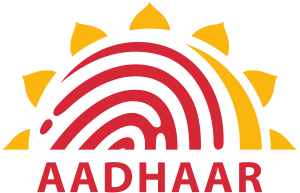AADHAAR – UNIQUE IDENTIFICATION PROJECT
Don’t let anyone steal your dream. It’s your dream, not theirs. (Dan Zadra)
In recent years India has introduced programs and legislation to address some of the issues facing huge numbers of the poor in India. India legislated the legal age of hiring young people which actually works against our families as they need all the possible income they can get in order to survive. Mandatory helmets for those riding motorcycles was put in place. Immunization programs have targeted the rural areas of India.
One of the largest programs introduced is the Unique Identification Project.
In January 2012, Manmohan Singh, the prime minister of India addressed his government by saying that there should be shame over: 2/5ths of India’s children are underfed, infant mortality is high, illiteracy is rampant, there is a lack of clean drinking water, and countless other curses that affect the poor.
Poverty has many causes, and no simple cure. But one massive problem in India is that few poor people can prove who they are. They live in villages where multitudes share the same name. Their lack of an identity excludes them from the modern economy. They cannot open bank accounts, and no one would be so foolish as to lend them money.
The government offers them all kinds of welfare, but because they lack an identity, they struggle to lay hands on what they have been promised.
Aadhaar means “support or foundation”
Aadhaar is a 12-digit unique number which the Unique Identification Authority of India (UIDAI) will issue for all residents in India. The number will be stored in a centralized database and linked to the basic demographics and biometric information – photograph, ten fingerprints and iris – of each individual.It is easily verifiable in an online, cost-effective way. So also, it is unique and robust enough to eliminate the large number of duplicate and fake identities in government and private databases The random number generated will be devoid of any classification based on caste, creed, religion and geography.[7]
One of the advantages of the UID is ” 2.By providing a clear proof of identity, Aadhaar will also facilitate entry for poor and underprivileged residents into the formal banking system and the opportunity to avail services provided by the government and the private sector.”
The program is for all Indians, and there have been over 200 million people registered so far. The program is however, voluntary, and not well advertised to the poor communities.
For those not having the required documents for enrollment, the government introduced an “introducer system” of people who can vouch for the validity of a person’s information. The UID number of the introducer would become part of the person who is getting enrolled. This has raised privacy issues as India lacks strong privacy and data-protection laws. There is also some concerns regarding the accuracy of the Biometric measures of identification.
For the poor, having a secure online identity alters their relationship with the modern world.
Poor Indians would be able to open a bank account which would erase the need for middle men who often cheat the poor.
Although there appears to be some validity with the complaints about the process and system, the system is going ahead.
……India plainly needs better data-protection laws, but even if the existing rules remained unchanged, the threat to liberty would be dwarfed by the gains to welfare: to people who live ten to a room, concerns about privacy sound outlandish. Some of the resistance is principled, but much comes from the people who do well out of today’s filthy system. Indian politics hinge on patronage – the doling out of opportunities to rob one’s countrymen. UID would make this harder. That is why it faces such fierce opposition, and why it could transform India. [and serve as a model for other countries.]
The registration process appears to be hit and miss. At least it has been for “our families”. The families that live immediately behind Khar school have not been registered. Some of the temporary slum dwellers have been registered but not all. They put a notice in the paper about the registration process, but for most of our families who are illiterate, that makes no sense. There is also an excellent web site for UID, but again, our families do not have access to it.
The UID numbers for those who have been registered have not been given out yet, and there is no indication of when this might happen. The process clearly is going to take many years to complete. However, it does have the potential to improve the lives of the poor by giving them access to services that are available to those who hold documentation records.
We can only hope that this happens and that our families will benefit.
The following sources were used in the above blog:
Mumbai mid-day newpaper
The Economist Jan.14, 2012
www.uidai.gov.in
www.en.wikipedia.org/wiki/Unique_Identification_Authority_of_India
http://www.uidnumber.org/.org




